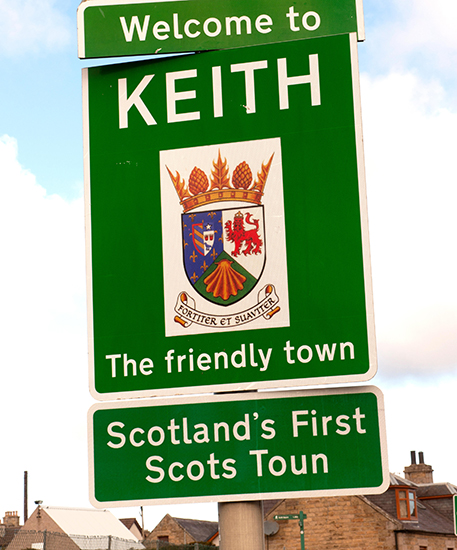20.3 Scots Standard English - A standard written language
In sociolinguistics it is recognised that languages have different registers, which are varieties of the language that are deployed in given social interactions. For example, if one is in a formal situation, one would communicate differently than with one's friends.
From a rhetorical perspective, considering the type of communication one is engaging in, one can consider which mode one is deploying. That is to consider, for example, are you narrating, describing, or arguing a point? Of particular interest here is expository rhetoric, which is the typical style of language used to provide explanations or information. Examples of this are traffic signs or bulletins.
When people think of the use of a standard language, they often consider only the formal register and the expository mode. Historical linguists have observed that Scots was beginning to form standard conventions where it was used in these registers and modes.
In the 17th–19th centuries formal expository text in Scotland standardised to Standard English, abandoning the written Scots used in clerical occupations for hundreds of years. Written Scots in other registers and rhetorical modes, such as letters, music, comics, poetry and quoted speech has persisted.
During this 200-year period, prescriptivism, defining how someone ought to write and speak, was the role of the linguist. It wasn't until the 20th century that descriptive linguistics, observing and understanding how people use language, came to the fore. It's with these descriptive tools we can today observe and speak about Scots language varieties and derive a prescriptive written Scots Standard.
As we have seen, it's with this prescriptivism, being told the 'correct' way to write and speak, the spoken language variety Scots Standard English came into being.
From the 18th century, labouring under the misapprehension that Scots was a corruption of pure English, initial attempts at reforming Scottish language looked to change the accents, that is the underlying phonological structure, of Scottish speakers. This ultimately proved an impossible enterprise and to this day there are still elocutionists working to 'neutralise' Scottish accents. It ought to be noted that there is no such thing as a neutral accent. Therefore, when people strive to ‘speak properly’, they aim to speak the accent of the dialect with most 'prestige'.
As such the movement to standardise towards written Standard English sought to have Scottish speakers speak Standard English, sometimes humorously referred to as 'Broad English', with the Scots phonological system, i.e. using the sounds from the Scots language to speak English. As mentioned before, today this is known as Standard Scottish English (SSE).
Handsel number 2: hand

